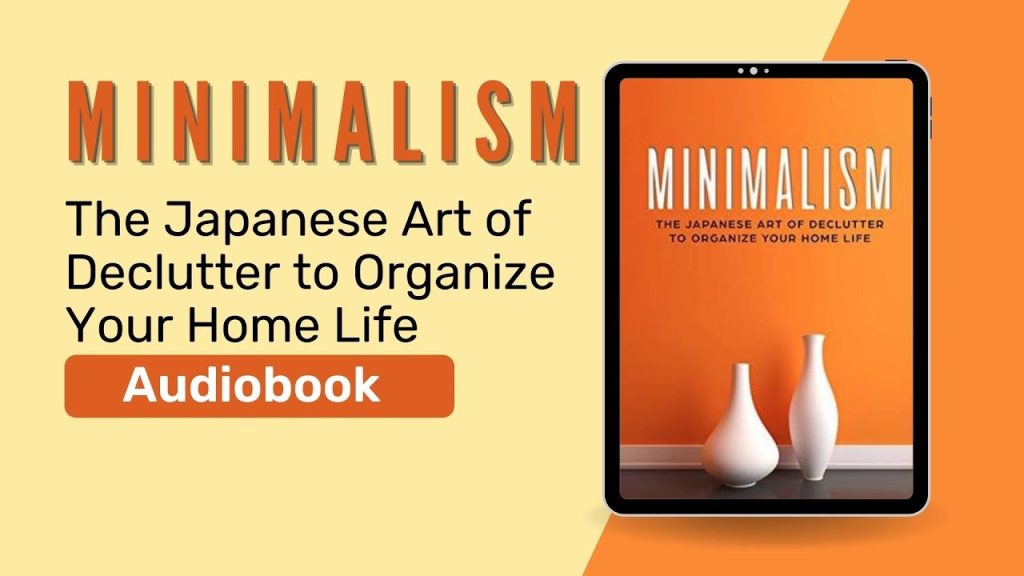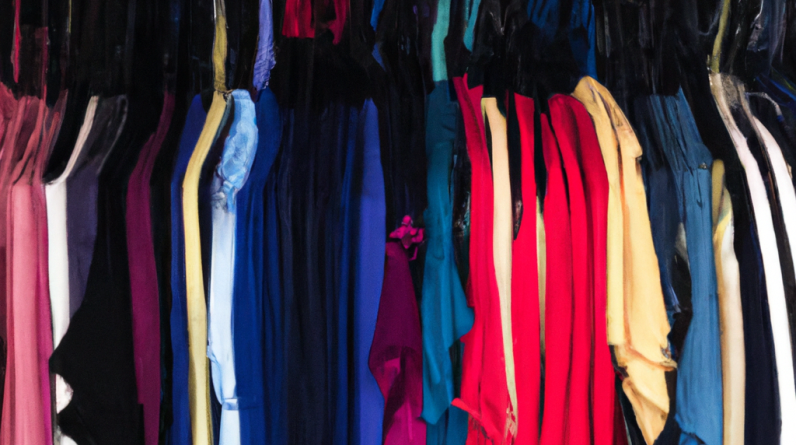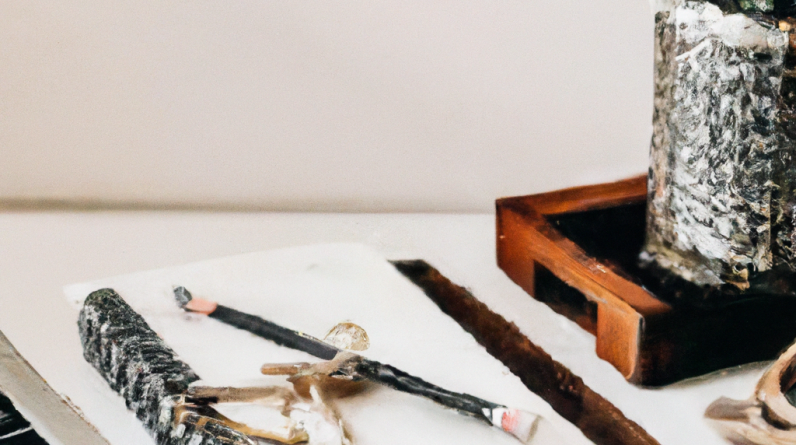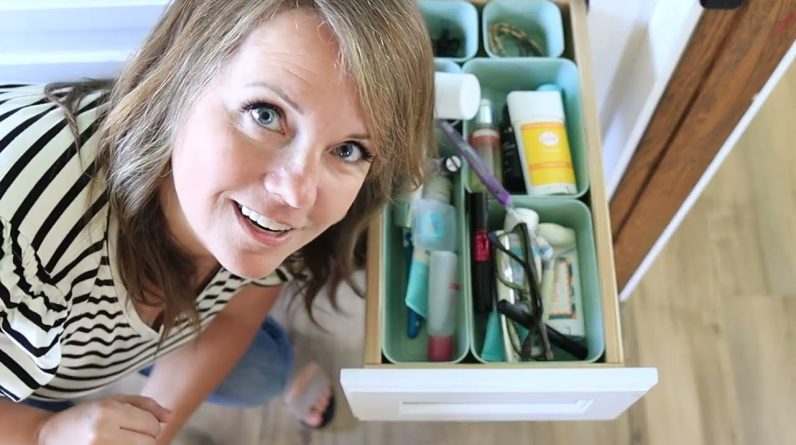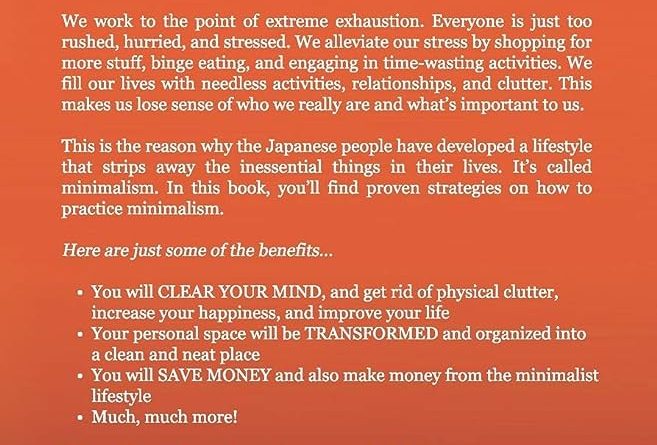
In the fast-paced world we live in, it’s easy to find ourselves surrounded by an overwhelming amount of clothes and belongings. However, there is a simple yet transformative solution to this problem – minimalist decluttering. By adopting a minimalist mindset and implementing practical strategies, you can create a calm and organized living space, free from the burden of excessive stuff. In this article, we will explore the art of minimalist decluttering, focusing specifically on decluttering clothes. Get ready to embark on a journey towards a more minimalist lifestyle and discover the benefits it brings.
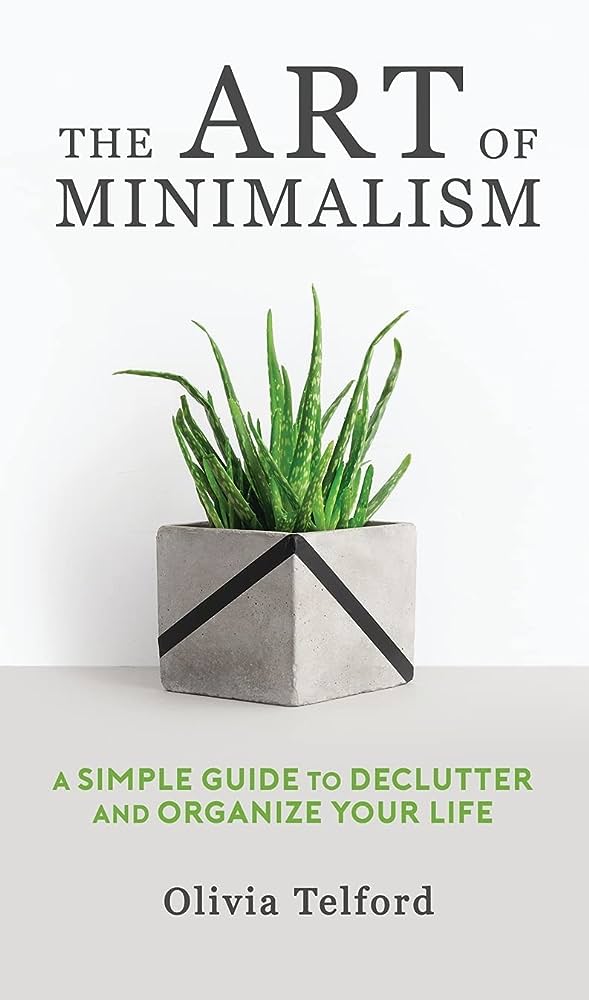
Table of Contents
Clothing Decluttering
Assessing Your Wardrobe
When it comes to decluttering your clothing, the first step is to assess your entire wardrobe. Take every item out of your closet and drawers and lay them out in a visible area. This will give you a clear overview of what you own. As you assess each item, ask yourself if it still fits, if you love it, and if you have worn it within the past year. Be honest with yourself and let go of those pieces that no longer serve you.
Sorting System
To effectively declutter your clothing, establish a sorting system. This can be as simple as creating three piles: keep, donate, and discard. Put the clothes you love and wear often in the keep pile. Items that are still in good condition but no longer fit your style or needs can be donated. Finally, any clothing that is stained, torn, or worn out should be discarded.
Keeping vs. Discarding
When deciding whether to keep or discard an item, it’s important to consider its value to you. Minimalism encourages us to surround ourselves with items that bring us joy and serve a purpose in our lives. If a piece of clothing doesn’t align with these criteria, it may be time to let it go. Remember, by reducing the volume of your wardrobe, you are creating space for the pieces that truly matter to you.
Donation and Selling
Once you have sorted through your clothing, take the items you plan to donate and find a local charity or organization that accepts clothing donations. Donating your clothes not only helps those in need but also reduces waste. Additionally, for items that are in good condition and have value, consider selling them online or hosting a yard sale to earn some extra money and give your clothes a second life.
Organizing the Remaining Clothes
After decluttering your wardrobe, it’s essential to create an organizing system for the remaining items. This will help you maintain a minimalist and clutter-free space. Consider organizing your clothes by category (e.g., tops, bottoms, dresses) or by color to create a visually pleasing and functional layout. Invest in storage solutions such as hangers, drawer dividers, and shelf organizers to maximize your space and keep everything tidy.
Applying Minimalism to Other Possessions
Evaluating Other Possessions
While clothing is often the easiest category to start with, the principles of minimalism can be applied to all areas of our lives. Take a mindful approach to evaluate your other possessions. Consider each item’s purpose, sentimental value, and frequency of use. Are there any items that you no longer need or that contribute to clutter? Be intentional in your evaluation and make decisions based on what truly adds value to your life.
Categorizing and Sorting
To streamline the decluttering process for other possessions, establish categories and sorting criteria. Common categories include books, electronics, kitchenware, and sentimental items. Within each category, sort items into Keep, Donate/Sell, and Discard piles. Remember to be intentional and realistic about what you truly need and use in each category, and let go of anything that no longer serves a purpose.
Mindful Consumption
A key aspect of minimalism is practicing mindful consumption. Before making a new purchase, ask yourself if the item aligns with your values and adds value to your life. Avoid impulse buys and take the time to consider whether you truly need the item or if it will contribute to clutter. By being mindful of your consumption habits, you can reduce unnecessary purchases and focus on acquiring items that truly bring you joy and serve a purpose.
Getting Rid of Duplicates
Duplicates can easily accumulate in our homes, leading to unnecessary clutter. Take the time to identify duplicate items and decide on the best course of action for each. If the duplicates are still in good condition, consider donating or selling them. By keeping only one of each item, you can free up space and avoid unnecessary clutter.
Digitizing and Reducing Paper Clutter
In today’s digital age, it’s possible to significantly reduce paper clutter by digitizing important documents. Scan and store important papers like receipts, bills, and documents on your computer or in the cloud. This not only saves physical space but also makes it easier to access and organize important information. For items that you must keep in physical form, create a designated filing system to keep everything organized and easily accessible.
Minimalist Approach to Home Decor
Assessing Existing Decor
When decluttering your home decor, start by assessing the items you currently have. Look at each piece with a critical eye and ask yourself if it truly adds value to the space. Consider the aesthetic appeal, functionality, and your personal connection to each item. Be selective and let go of any decor that no longer aligns with your desired aesthetic or serves a purpose in your home.
Simplifying and Streamlining
Minimalism is about simplifying and streamlining, so aim to create a clean and uncluttered look in your home. Consider removing any decor that feels excessive or visually overwhelming. Embrace a minimalist color palette and focus on displaying a few carefully chosen items that truly bring joy and enhance the overall aesthetic of your space.
Creating Functional Spaces
Beyond aesthetics, minimalism promotes functionality and purpose in our living spaces. Assess each room with a focus on functionality. Remove any items that impede movement or hinder the room’s intended purpose. By creating functional spaces, you can enhance the flow and usability of your home, resulting in a more peaceful and enjoyable living environment.
Embracing Empty Space
One of the defining characteristics of minimalism is the embrace of empty space. Avoid the temptation to fill every nook and cranny with decor. Instead, let some areas remain intentionally empty. This not only improves the visual balance of a room but also creates a sense of calm and tranquility. Appreciate the beauty of simplicity and the power of negative space in your home.
Organizing and Storing Items
To maintain a minimalist home decor, establish effective organizing and storage systems. Invest in storage solutions that are both functional and visually appealing, such as baskets, bins, or storage ottomans. When organizing your decor, consider grouping similar items together and keeping frequently used items easily accessible. Avoid overcrowding shelves or surfaces and opt for a clean and clutter-free presentation.
Furniture and Minimalism
Assessing Furniture Needs
When it comes to furniture, minimalism focuses on functionality and purpose. Assess your furniture needs based on your lifestyle and the activities that take place in each room. Ask yourself if each piece serves a necessary purpose or if it simply adds unnecessary visual clutter. Removing furniture that is not functional or essential will create a more streamlined and open space.
Identifying Multipurpose Furniture
Minimalism encourages us to make the most of our furniture by investing in multipurpose pieces. Look for furniture that serves multiple functions, such as storage ottomans, pull-out sofa beds, or coffee tables with built-in shelves. By choosing furniture that can fulfill several needs, you can maximize the functionality of your space while minimizing the number of individual pieces.
Embracing Furniture with Hidden Storage
To maintain a minimalist aesthetic, consider furniture with hidden storage compartments. This can help keep your space tidy and free of visual clutter. Opt for bed frames with built-in drawers, TV stands with closed cabinets, or side tables with hidden compartments. These furniture pieces allow you to store items out of sight, creating a clean and minimalist look.
Opting for Simple and Timeless Designs
In line with the minimalist philosophy, choose furniture with simple and timeless designs. Avoid overly ornate or trendy styles that may quickly go out of fashion. Opt for neutral colors, clean lines, and high-quality materials. By selecting furniture with a minimalist aesthetic, you can ensure that it seamlessly integrates into your space and stands the test of time.
Ensuring Furniture Fits the Space
When selecting furniture, it’s crucial to consider the size and scale of your space. Oversized or cluttered furniture can make a room feel cramped and chaotic, defeating the purpose of minimalism. Measure your space carefully and choose furniture that fits proportionally. Additionally, allow for ample negative space around each piece to create a visually balanced and harmonious environment.

The Psychology of Minimalism
Understanding the Benefits
Minimalism goes beyond creating an organized and clutter-free physical space. It also has psychological benefits. By reducing the number of possessions and simplifying our lives, we can experience reduced stress, increased focus, and improved overall well-being. Understanding these benefits can serve as motivation and a reminder of why embracing minimalism is worth the effort.
Reducing Mental Clutter
Just as physical clutter can overwhelm our senses, mental clutter can weigh us down mentally and emotionally. Minimalism helps in reducing mental clutter by promoting a more intentional and mindful approach to our possessions and priorities. By eliminating distractions and focusing on what truly matters, we can declutter our minds and experience clearer thinking and increased mental clarity.
Letting Go of Sentimental Items
One of the challenges of minimalism is letting go of sentimental items. We often associate memories and emotions with physical possessions, making it difficult to part ways with them. However, by understanding that memories reside within us and not our belongings, we can free ourselves from the emotional burden of holding onto unnecessary items. Practice gratitude for the memories associated with these items and then let them go, freeing both physical and mental space.
Fostering a Mindset of Contentment
Minimalism encourages us to shift our mindset from constantly seeking more to embracing contentment with what we already have. By reducing our possessions, we can appreciate and fully utilize what we own, rather than always yearning for the next best thing. Cultivating contentment allows us to find joy in simplicity and leads to a greater sense of satisfaction and fulfillment.
Cultivating Gratitude
Gratitude is a fundamental aspect of minimalism. Embrace the practice of gratitude by acknowledging and appreciating the items and experiences that bring you joy. Take time each day to reflect on the things you are grateful for and express gratitude for the simplicity and beauty in your life. By cultivating gratitude, you can shift your focus from acquiring more to valuing and cherishing what you already have.
Strategies for Minimalist Digital Decluttering
Deleting Unnecessary Files and Apps
Digital clutter can be just as overwhelming as physical clutter. Start by deleting unnecessary files and apps from your devices. Remove duplicate and outdated files, old applications that you no longer use, and any digital content that no longer adds value to your life. This will free up storage space and make it easier to find what you truly need.
Organizing Digital Files and Folders
Organize your digital files and folders in a logical and easily accessible manner. Create a system of categories and subcategories that align with your specific needs. Use descriptive file names and consider adding tags or labels to improve searchability. Regularly declutter your digital files by deleting or archiving items that are no longer relevant or necessary.
Limiting Digital Subscriptions
Digital subscriptions can quickly accumulate and contribute to a sense of overwhelm. Evaluate your digital subscriptions and consider which ones truly serve a purpose or bring you value. Unsubscribe from services that no longer align with your interests or lifestyle. By reducing the number of subscriptions, you can declutter your digital life and eliminate unnecessary distractions.
Creating a Digital Minimalist Routine
Establish a digital minimalist routine to help you maintain a clutter-free digital life. Set specific times each day or week to go through emails, messages, and notifications. Avoid mindless scrolling and strive for intentional and focused use of digital devices. By creating boundaries and being mindful of your digital habits, you can minimize digital overwhelm and increase productivity.
Mindful Social Media Usage
Social media can have a significant impact on our mental well-being and contribute to digital clutter. Be mindful of your social media usage and its impact on your life. Consider unfollowing accounts that offer no value or cause negative emotions. Limit the time spent on social media and establish boundaries to prevent it from becoming a source of distraction or comparison. Use social media intentionally and focus on connecting with others and engaging in positive content.

Minimalism and Sustainability
Reducing Consumption
Minimalism and sustainability go hand in hand. By reducing our consumption, we can minimize our impact on the environment. Practice mindful consumption by only buying what you truly need and avoiding unnecessary purchases. Before making a new purchase, consider if the item is ethically produced, made to last, and aligns with your values. By reducing our consumption, we can contribute to a more sustainable world.
Opting for Quality Over Quantity
Instead of accumulating a large quantity of low-quality items, choose quality over quantity. Invest in well-made, durable products that are designed to last. High-quality items not only have a smaller environmental footprint but also save money in the long run by eliminating the need for frequent replacements. Choose items that are built to endure and enrich your life for years to come.
Embracing Secondhand and Upcycled Items
Embrace the concept of “reduce, reuse, recycle” by incorporating secondhand and upcycled items into your life. Shop at thrift stores, consignment shops, or online platforms that specialize in secondhand goods. Not only can you find unique and affordable items, but you are also reducing the demand for new products and extending the lifespan of existing ones.
Recycling and Responsible Disposal
When decluttering, it’s essential to dispose of unwanted items responsibly. Find recycling centers and drop-off locations in your community to recycle materials such as paper, plastic, glass, and electronics. Make an effort to separate recyclables from general waste and educate yourself on the proper disposal methods for different types of items. By recycling and responsibly disposing of your possessions, you can contribute to a more sustainable future.
Supporting Ethical and Eco-Friendly Brands
When purchasing new items, support ethical and eco-friendly brands that align with your values. Look for companies that prioritize sustainable materials, fair trade practices, and ethical labor conditions. By supporting these brands, you are not only investing in quality products but also encouraging responsible business practices and helping drive positive change in the industry.
Overcoming Challenges in Minimalist Decluttering
Emotional Attachment to Possessions
One of the most common challenges in minimalist decluttering is emotional attachment to possessions. We often associate memories and emotions with certain items, making it difficult to let go. Start by recognizing that memories reside within us, not in material possessions. Practice detachment and focus on the benefits of decluttering, such as a more peaceful and organized space. Gradually let go of sentimental items, keeping only those that truly bring you joy and add value to your life.
Overcoming Fear of Letting Go
Fear of letting go can hold us back from embracing minimalism. We may worry that we might need an item in the future or that we will regret getting rid of it. Overcome this fear by reframing your mindset. Focus on the freedom and mental clarity that come with letting go of unnecessary possessions. Start small, decluttering in smaller increments, and gradually build confidence in your ability to let go.
Dealing with External Pressure
Decluttering and adopting a minimalist lifestyle can sometimes be met with resistance from others. Family, friends, or society may not understand or support your choices. It’s important to remain firm in your decision and remember that minimalism is a personal journey. Communicate the benefits of minimalism and focus on how it aligns with your values and goals. Surround yourself with like-minded individuals who can provide encouragement and support.
Avoiding Reaccumulation of Clutter
To maintain a minimalist lifestyle, it’s essential to avoid reaccumulation of clutter. Be mindful of your purchasing habits and practice intentional consumption. Before bringing new items into your space, ask yourself if they truly align with your values and serve a purpose. Regularly declutter and reassess your possessions to prevent clutter from building up again. By staying vigilant and mindful, you can maintain a clutter-free environment.
Maintenance and Regular Purging
Minimalism is not a one-time task but an ongoing process. Regular maintenance and purging are essential to ensure that clutter doesn’t creep back into your life. Set aside time at least once a year to review your possessions and declutter as needed. Make decluttering and organization a part of your routine to maintain a minimalist lifestyle over the long term. Regular purging and reevaluation will help you stay true to your minimalist goals.
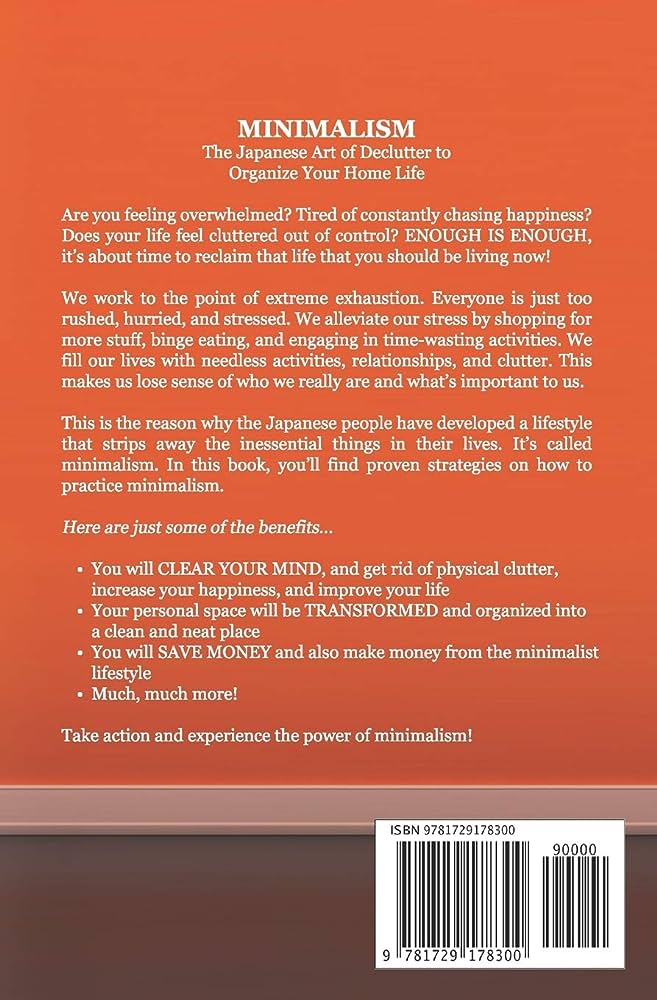
Minimalism in Digital Workspaces
Clearing Desktop Clutter
Similar to physical workspaces, digital workspaces can accumulate clutter. Start by clearing your desktop and organizing files into appropriate folders. Remove any unnecessary icons or files from your desktop and create a minimalist aesthetic. Utilize virtual desktops or spaces to separate different projects or tasks, helping you stay focused and organized.
Organizing Digital Documents and Emails
Organize your digital documents and emails by creating folders and labels that align with your workflow and priorities. Develop a naming system that allows for easy searching and retrieval of files. Regularly clean out your email inbox by unsubscribing from unnecessary mailing lists and archiving or deleting old messages. By having an organized digital workspace, you can increase productivity and reduce digital clutter.
Creating a Distraction-Free Work Environment
Create a distraction-free work environment by minimizing digital distractions. Turn off notifications for non-essential apps and put your phone on silent or in another room while you work. Utilize website blockers or time-tracking applications to stay focused on the task at hand. By creating boundaries and reducing distractions, you can enhance your productivity and concentration in the digital workspace.
Utilizing Digital Task and Project Management Tools
Digital task and project management tools can help streamline and declutter your digital workspaces. Choose a tool that suits your needs and preferences, and use it to track and prioritize tasks, communicate with team members, and store important project documents. By utilizing these tools, you can centralize information and reduce the need for multiple apps or cluttered email threads.
Implementing Minimalist Design Principles
Apply minimalist design principles to your digital workspace to create an aesthetically pleasing and clutter-free environment. Choose a clean and simple interface for your operating system, applications, and website design. Utilize whitespace, minimal colors, and easy-to-read fonts to create a visually balanced and calming digital space. By applying minimalist design principles, you can enhance visual clarity and create a more enjoyable digital experience.
Creating a Minimalist Mindset
Reflecting on Personal Values
Developing a minimalist mindset begins with reflecting on your personal values. Consider what truly matters to you in life and how your possessions align with those values. Identify the areas where excess and clutter may be hindering your ability to live in accordance with your values. By understanding what is truly important to you, you can make intentional decisions about what to keep and what to let go of.
Setting Clear Goals
Setting clear goals is essential for embracing minimalism. Determine what you hope to achieve through decluttering and adopting a minimalist lifestyle. Your goals could include creating a peaceful and organized home, reducing stress, or increasing your ability to focus. Write down your goals and refer back to them as a reminder of why you are pursuing minimalism. Having a clear sense of purpose will help you stay motivated and focused throughout the decluttering process.
Practicing Gratitude and Mindfulness
Gratitude and mindfulness are fundamental aspects of minimalism. Cultivate a practice of gratitude by regularly reflecting on the things you are grateful for. Appreciate the objects, experiences, and relationships that bring joy and value to your life. Practice mindfulness by being present in the moment and intentionally engaging with your surroundings. By incorporating gratitude and mindfulness into your daily life, you deepen your minimalist mindset and foster a greater sense of contentment.
Focusing on Experiences Rather Than Possessions
Shift your focus from acquiring possessions to valuing experiences. Embrace the idea that happiness and fulfillment come from meaningful experiences and connections, rather than material possessions. Invest your time, resources, and energy into activities that bring you joy, growth, and personal fulfillment. By prioritizing experiences over possessions, you can cultivate a minimalist mindset that promotes a more meaningful and fulfilling life.
Being Intentional in Decision-Making
Being intentional in decision-making is a core principle of minimalism. Pause and reflect before making any new purchases or commitments. Ask yourself if the item or commitment aligns with your values, goals, and desired lifestyle. Avoid impulsive decisions and give yourself time to assess the true value and necessity of each choice. By being intentional, you can avoid accumulating unnecessary possessions and focus on what truly adds value to your life.
Incorporating minimalism into your lifestyle requires intention, effort, and commitment. By following the strategies outlined above and embracing a minimalist mindset, you can create a home and life that support your values and provide a sense of clarity, peace, and purpose. Remember, minimalism is not about depriving yourself but rather about curating a life filled with what truly brings you joy, meaning, and contentment.
